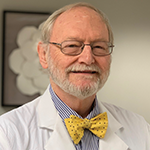
As shortages in rheumatology become more pronounced, the need to get more physicians into the field also increases. A report from 2007 indicated that there could be a deficit of more than 2,500 practicing rheumatologists by 2025.1
One way to generate interest is to make the most of each medical student’s rotation through the specialty. Exposure to the best facets of the specialty can lead otherwise undecided students into a career in rheumatology.
“Rheumatology as a field gets a relatively small percentage of those choosing careers in internal medicine,” says Richard Brasington, MD, professor of medicine and director of clinical rheumatology at Washington University School of Medicine in St. Louis. “Everybody we recruit counts and really helps. Rheumatology is not a field people are automatically drawn to. Many don’t know what it is, so I think it is very important that we present it to students in a way that is appealing.”
Positive Aspects Key
The key is playing up the positive aspects of the specialty during the time a student is being exposed to it. One of these is the challenge inherent in the practice of rheumatology.
“This is a specialty where the physician can bring a lot of expertise to bear on a focused group of diseases,” says David I. Daikh, MD, PhD, the Kenneth H. Fye Chair in Rheumatology at the University of California, San Francisco. “Many are uncommon or hard to figure out, which brings an intellectual challenge to the field that many students find compelling. For research-oriented students, there is still much work to be done on the causes and treatments of these diseases.”
Exposing students, residents and fellows to challenging patients is an important aspect that was a theme common to all the rheumatologists interviewed for this story.
Challenging Patients
“Early in the career of a student, they may see a really sick person in the ICU,” says Ernesto Gutierrez, MD, a physician in private practice in Lebanon, Pa. “Cardiology takes a crack, and then medicine comes in, and no one can figure out what is going on. The rheumatologist comes in and finally comes up with a diagnosis. It is very satisfying when you can take a case that has baffled others and figure it out.”

Dr. Brasington notes that this was a pivotal point when he was making his specialty decision during medical school.
“During my second year in medical school, I had a two-month rotation in medicine, and I don’t remember many of the patients,” he says. “I do remember a man with polyarticular gout and another sick with lupus. All the people with congestive heart failure or fevers did not make an impression on me, while the rheumatology-related presentations did.”
Critical Thought Required
This is also a field that requires quite a lot of critical thought and interpretation of physical exams and tests. Because there is often not a single test or procedure you can use to make the diagnosis, it is not one of the easier specialties to pursue, and practitioners have to be comfortable with a great deal of ambiguity.
“Although there is a lot of science underpinning the specialty, what is really interesting to me is the great amount of art that is still required,” says Dr. Gutierrez. “It is more right-brain oriented and requires intuition.”

This can be a two-edged sword. The thought part may scare off some students, if not handled correctly.
“One of the things that is important is to try to simplify rheumatology,” says Dr. Brasington. “I’ll often say this is just a matter of X then Y then Z, making it approachable and accessible to someone. That is important to young people.”
Another aspect of the specialty that students may find compelling is the old-school nature of the rheumatologist’s practice.
“One of the things I emphasize is that we practice, in many ways, a more old-fashioned style of medicine,” says Dr. Brasington. “We get a good history and physical, perform some basic tests and then it is largely sitting down and putting the pieces together. We are much less dependent on technology and more dependent on thinking.”
Social Aspects
There are also social aspects of the specialty that aren’t seen in some other kinds of medicine. Many students may gravitate toward a form of practice in which they actually get to know their patients.
“This can be a very rewarding profession, personally,” says Dr. Daikh. “In addition to delving deeply into a group of diseases, you are able to build a close therapeutic relationship with patients over many years.”
Sitting down with a patient and discussing not only their disease process but also how the family is doing can be a major factor in the career decisions of many students. This is something that physicians involved with teaching medical students in medical schools and the community should try to emphasize.
“For patients with rheumatoid arthritis and other rheumatic diseases, we can make a huge impact on their lives going forward,” says Dr. Gutierrez. “With the drugs we now have, people don’t have to suffer as much, and many can lead very close to normal lives. That can be very satisfying, both personally and professionally.”
Another of the social aspects is that the size of rheumatology makes it more collegial than some other specialties.
“We are a smaller group than many specialties,” says Dr. Daikh. “We have a single professional society composed of both academic and community physicians. We work together all the time. We have similar goals, especially as they relate to education, clinical care and fostering the scientific growth of the field.”
Lifestyle
A final consideration for the student planning their career is the lifestyle the specialty provides them.
“On the life side, there is a lot to recommend rheumatology as well,” notes Dr. Daikh. “It is largely an outpatient vocation. You are able to mix work hours in with other important aspects of your life.”
When interacting with students, residents and even fellows, rheumatologists should present rheumatology as a field they may want to consider as a career. Another focus should be on giving them an awareness of rheumatology in whichever specialty they take up.
“Even if students don’t end up with us for their careers, many of the conditions we treat are extremely common,” notes Dr. Daikh. “Medical students frequently don’t get adequate exposure to these kinds of conditions during medical school.”
ACR & the Rheumatology Research Foundation
An indication of the importance attached by specialty leaders to bringing medical students to the profession is seen in the various programs offered by the ACR and the Rheumatology Research Foundation (the Foundation). These are multilevel endeavors to get a person interested in the specialty and keep them involved, at least through residency selection.
“A program was started a few years ago that tried to reach students at medical schools around the city hosting our annual scientific sessions,” says Dr. Daikh, a former president of the Foundation. “We invite them to the meetings and then partner them up with physicians who are in attendance. This exposes them to the profession and all of the aspects of research that are currently going on.” For example, at this year’s Annual Meeting, the Foundation hosted the Student and Resident Outreach Experience. The event gave students and residents in the Boston area the opportunity to attend the meeting, learn more about the field from a wide range of rheumatology community members and network with others who have chosen to pursue the subspecialty.
The Foundation, which was established by the ACR in 1985, funds a variety of research preceptorships for residents, and medical and graduate students. The preceptorships provide an opportunity for students to work with a rheumatologist on a research project. Some students who participate have even been invited to present their research at the ACR’s meetings.
The Foundation also offers the Medical Student Clinical Preceptorship. The student shadows the physician on a full-time basis for either four- or eight-week periods. This experience includes observing patient contact in the office, on hospital rounds, during rehabilitation facility visits and at conferences at the preceptor’s institution.
The Foundation is also encouraging educators to find innovative ways to provide a high-quality clinical educational experience for students and residents and build interest in rheumatology. “We have a very innovative and unique program funded and administered by the Foundation,” says Dr. Daikh. “The Clinician Scholar Educator Award is a three-year grant, providing funding for faculty interested in education. Within that grant is a lot of protected time to do teaching and develop new methods for medical education. It has been very successful.”
Staying in Touch
If a connection is made, it can be important to keep in touch with the student through the rest of their school career. Let them know the physician can be contacted if they have any rheumatology questions as they go through other rotations. If appropriate, offer to write letters for their residency.
“When I work with students, I am not really trying to recruit them,” says Dr. Brasington. “I try to explain a process that they probably don’t know a lot about. I am mostly trying to get their attention to consider rheumatology as their specialty.”
Often, this question boils down to the individual physicians and how they portray their specialty to the students.
“One of the things that really matters is that over the last 20 years or so, rheumatologists have become more enthusiastic about the field, and I think it shows,” says Dr. Brasington. “I think enthusiasm is important, and it certainly gets the attention of students.”
Kurt Ullman is a freelance writer based in Indiana.
Workforce Outlook: What the research said
Objective: To develop and apply a model that allows prediction of current and future supply and demand for rheumatology services in the US.
Methods: A supply model was developed using the age and sex distribution of current physicians, retirement and mortality rates, the number of fellowship slots and fill rates, and practice patterns of rheumatologists. A Markov projection model was used to project needs in 5-year increments from 2005 to 2025.
Results: The number of rheumatologists for adult patients in the US in 2005 is 4,946. Male and female rheumatologists are equally distributed up to age 44; above age 44, men predominate. The percent of women in adult rheumatology is projected to increase from 30.2% in 2005 to 43.6% in 2025. The mean number of visits per rheumatologist per year is 3,758 for male rheumatologists and 2,800 for female rheumatologists. Assuming rheumatology supply and demand are in equilibrium in 2005, the demand for rheumatologists in 2025 is projected to exceed supply by 2,576 adult and 33 pediatric rheumatologists. The primary factors in the excess demand are an aging population, which will increase the number of people with rheumatic disorders, growth in the Gross Domestic Product and flat rheumatology supply due to fixed numbers entering the workforce and retirements. The productivity of younger rheumatologists and women, who will make up a greater percentage of the future workforce, may also have important effects on supply. Unknown effects that could influence these projections include technology advances, more efficient practice methods, changes in insurance reimbursements, and shifting lifestyles. Current data suggest that the pediatric rheumatology workforce is experiencing a substantial excess of demand versus supply.
Conclusion: Based on assessment of supply and demand under current scenarios, the demand for rheumatologists is expected to exceed supply in the coming decades. Strategies for the profession to adapt to this changing health care landscape include increasing the number of fellows each year, utilizing physician assistants and nurse practitioners in greater numbers, and improving practice efficiency.
Source: Deal CL, Hooker R, Harrington T, et al. The United States rheumatology workforce: Supply and demand, 2005–2025. Arthritis Rheum. 2007 Mar;56(3):722–729.
Reference
- Deal CL, Hooker R, Harrington T, et al. The United States rheumatology workforce: Supply and demand, 2005–2025. Arthritis Rheum. 2007 Mar;56(3):722–729.
